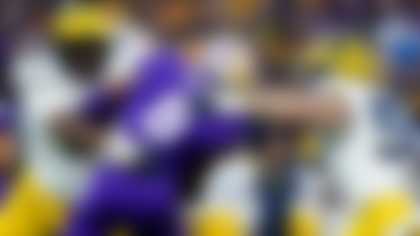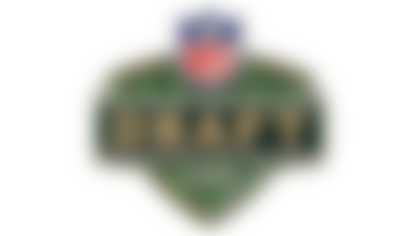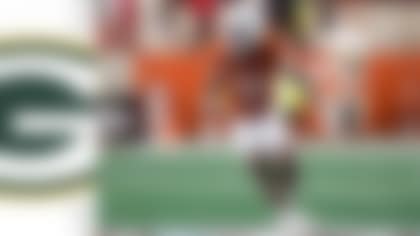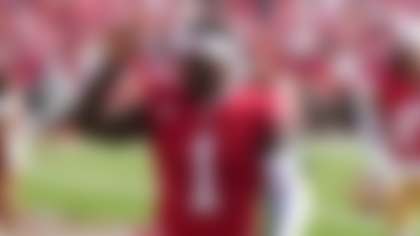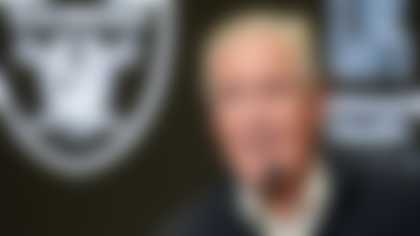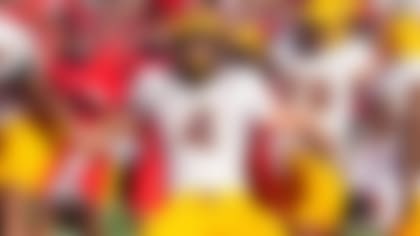NEW YORK -- After each of the first two nights of the 2012 NFL Draft, I covered teams that impressed me with their patience or timely risk-taking, as well as those that I thought might have made their picks more prudently.
But the third and final day of the draft is less about "winning" and "losing," and more about finding great value whenever possible.
Top undrafted players
Last year, there were 59 rookie free agents on Week 1 rosters. Gil Brandt lists the top 10 undrafted players who will be signed very quickly after the 2012 draft. **More ...**
There's no such thing as a fourth-round bust, but All-Pro teams and Pro Bowl rosters are littered with players selected in Rounds 4-7. Two of the league's leading sack-artists, defensive ends Jared Allen and Elvis Dumervil, went in the fourth round. Recently acquired Tampa Bay Buccaneers guard Carl Nicks was a fifth-round choice by the Saints in 2008, while seventh-round steal Jay Ratliff has manned the nose for the Cowboys admirably over the last few years.
Of course, Future Hall of Fame quarterback Tom Brady is the most famous sixth-round pick ever, but teams don't expect to get that sort of find late in the draft.
Six teams made shrewd enough moves Saturday, however, to meet team needs and bolster their depth, which can be the difference between having occasional success and building a perennial playoff contender. Here they are:
Arizona Cardinals
The Cardinals' Achilles' heel was their offense, but the solid picks they made Saturday might have greatly improved that area of the team. Tackles Bobby Massie (Ole Miss, fourth round) and Nate Potter (Boise State, seventh) and guard/tackle Senio Kelemete (Washington, fifth) were all excellent value. Quarterback Ryan Lindley might give Kevin Kolb and John Skelton a run for their money as a sixth-round rookie if he can improve his coordination and mobility within the pocket.
Another trouble spot for the Cardinals was the secondary, especially since trading Dominique Rodgers-Cromartie to Philadelphia in the Kolb trade last year. Finding potential starting cornerbacks Jamell Fleming (Oklahoma, third) and Justin Bethel (Presbyterian, sixth) really helped that cause.
Buffalo Bills
General manager Buddy Nix also found value on Day 3. Adding two solid offensive linemen was an absolute must; Zebrie Sanders (Florida State) cost them just a fifth-round pick despite having the physical attributes to become a starter, and Oregon's Mark Asper is a tough and underrated agile guard who adds great depth. Getting good, young linebackers Nigel Bradham (Florida State, fourth) and Tank Carder (TCU, fifth), and a starting nickel back in Ron Brooks (LSU, fourth) also added strength to the back seven.
Cincinnati Bengals
The Bengals had one of the best overall drafts this year. They found playmakers like tight end Orson Charles (Georgia, fourth) and receiver Marvin Jones (Cal, fifth) on offense, and help for a needy secondary in cornerback Shaun Prater (Iowa, fifth) and bruiser George Iloka (Boise State, fifth) on Day 3, after improving their offensive and defensive lines quite adeptly on Thursday and Friday. Already a playoff team, could they really start challenging the Pittsburgh Steelers and Baltimore Ravens at the top of the tough AFC North in 2012 or 2013?
Miami Dolphins
It was no surprise that the Dolphins snapped up quarterback Ryan Tannehill with the eighth overall pick. Their subsequent picks also made sense, as they attempted to support the former Texas A&M signal-caller throughout the rest of the draft. Receivers B.J. Cunningham (Michigan State, sixth) and Rishard Matthews (Nevada, seventh) were excellent late-round picks who will contribute right away with Brandon Marshall shipped off to Chicago. Tight end Michael Egnew (Missouri, third) gives Tannehill legitimate receiving help he would have lacked. Running back Lamar Miller is a home-run hitter who can open up a defense, and solid offensive tackle Jonathan Martin could allow John Jerry to stay at guard, forming a strong front five.
The team also met defensive needs by securing a strong run-stuffer tackle in Kheeston Randall (Texas, seventh) and strong-side linebacker in Josh Kaddu (Oregon, fifth).
Pittsburgh Steelers
Another draft ends with me examining the Steelers' picks and thinking, "How did they do that?" General manager Kevin Colbert let the draft play out in front of him the first two nights, selecting high-value players when they fell into his lap. But when talented Washington nose tackle Alameda Ta'amu was available 10 spots ahead of their scheduled fourth-round selection, Colbert pulled the trigger on a trade that brought Casey Hampton's replacement in the middle of the defense into the fold.
And just wait until you see how the team uses running back/receiver/returner Chris Rainey (Florida, fifth) –- former Steeler Antwaan Randle El will be proud. Adding intriguing big-bodied receiver Toney Clemons (Colorado, seventh), FB/TE David Paulson (Oregon, seventh) and feisty cornerback Terrence Frederick (Texas A&M, seventh) into the mix only strengthens an already deep roster.
Washington Redskins
Some Redskins fans may wonder why the team picked Michigan State quarterback Kirk Cousins with their first pick in the fourth round (102nd overall selection) instead of finding more talent to surround the expected offensive leader -– quarterback Robert Griffin III -– they selected exactly 100 picks earlier. Though RG3's talent is great, concerns about his durability will always be there because of his missed 2009 season (knee injury) and his excellent playmaking ability outside the pocket.
The Redskins found out in 1994 that using a second pick at quarterback (seventh-rounder Gus Frerotte) after using a high pick at the position (third overall pick Heath Shuler) is a great insurance policy: Frerotte took over as the starter over Shuler in year two and had a long NFL career with multiple clubs.




